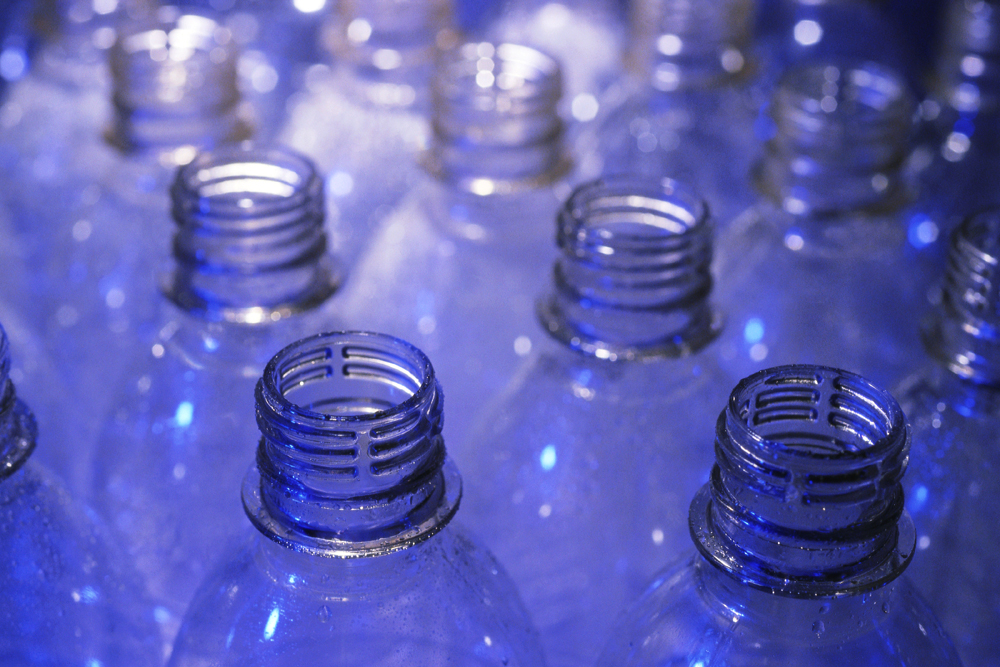
Silgan is the largest supplier of metal containers for food products in North America and a leading supplier of plastic containers for personal care products. With more than 22 production plants, Silgan Plastics is one of the top blow molders in North America.
Silgan Plastic’s Toronto-based manufacturing plant is home to three types of molding systems:
- Injection molding
- Injection blow molding
- Injection stretch blow molding
The plant produces a variety of plastic containers, lids and caps, many using PET preform molds with 72 individual cavities. Because Silgan runs a lot of PET and Pharmaceutical products, the company has developed a preventive maintenance program that meets customers’ product quality needs.
Silgan had difficultly keeping their molds clean
The company uses software that generates a work order based upon cycles for each mold. The cleaning cycles are setup with each customer to ensure that their molds are well maintained and in good working condition.
Silgan's cycles include:
-
72-cavity molds
-
Products made in 10 second cycles
-
Hot molds cleaned by hand after every 15,000 cycles
-
Chemical and citrus cleaners, degreasers, wire brushes, drills, and pipe cleaners used
-
Each mold took 2-3 hours to clean by hand
-
Molds thoroughly cleaned after every 60,000 cycles
-
Difficulty to get them completely clean
“When you clean a 72-cavity mold by hand, not only is it time consuming, it is difficult to get behind every slide and neck ring,” said Joe Pond, Setup Supervisor for Silgan Plastics. “In addition, the coatings and plastics that we use tend to get on other parts of the equipment, which also adds to the challenge.”
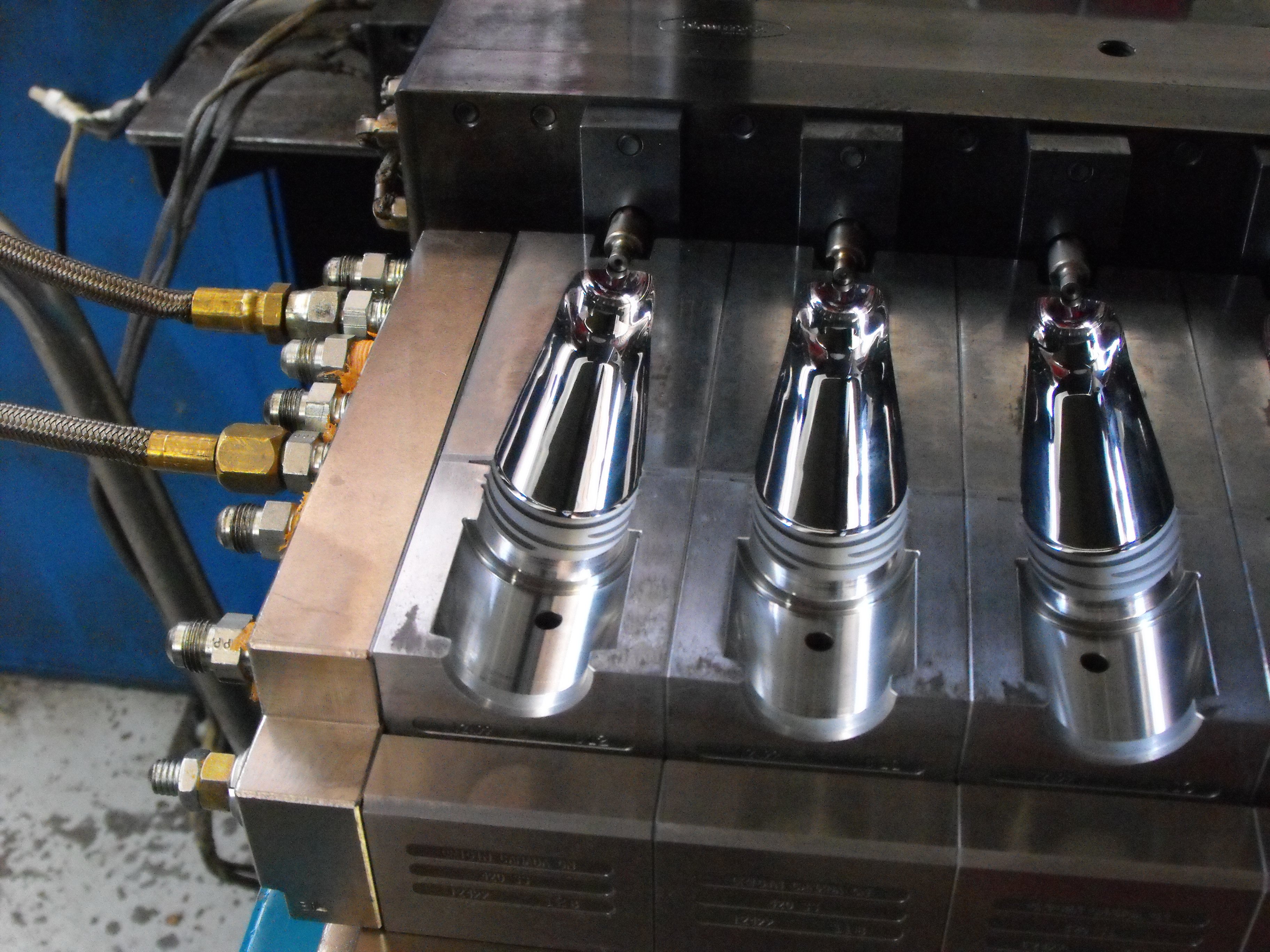
Husky recommends dry ice blasting
After attending a Husky Injection Molding Systems seminar, Pond asked Husky representatives what was the best method for cleaning high-cavitation molds. Husky recommended Cold Jet dry ice blast blasting systems.
Dry ice blasting uses non-abrasive media in the form of recycled CO2 pellets that won’t damage surfaces or equipment. The dry ice pellets are propelled at high velocities to blast contaminants from the mold surface. The combination of dry ice blast cleaning’s kinetic energy and thermal effects breaks the connection between the dirt and the surface, lifting away contaminants.
Learn more about dry ice blasting.
Injection molders experience the following benefits with dry ice:
-
Decreased cleaning time by 50 to 75%
-
No run-off, rinsing or drying required
-
No damage or change to the dimensions of the mold surface
-
Dry ice is safe and non-toxic
-
No downstream contamination
-
Reduction or elimination of employee exposure to dangerous chemical cleaning agents
Learn about dry ice cleaning for plastic molds
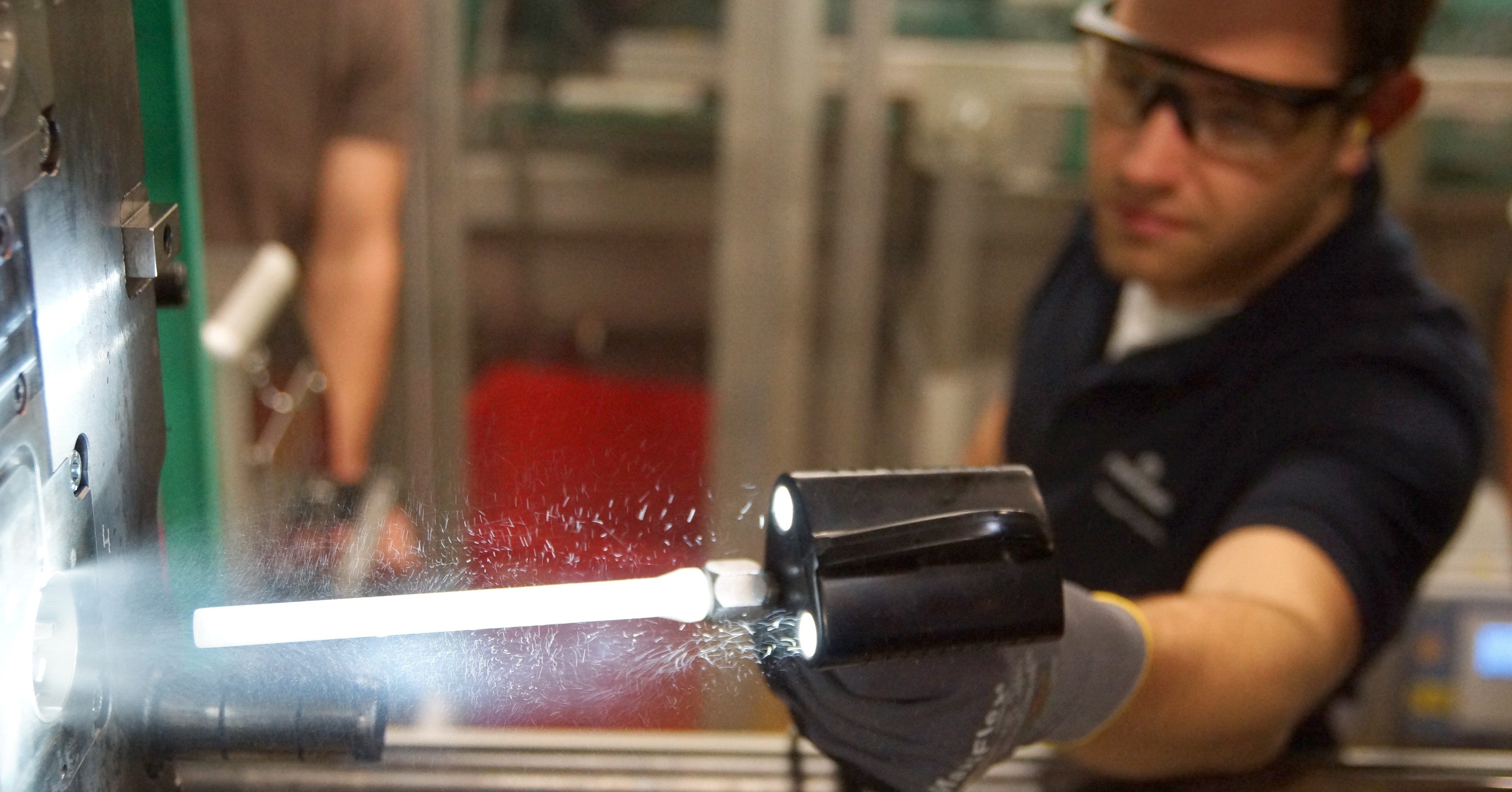
Silgan implements dry ice blasting
Following Husky’s recommendation and a Cold Jet demonstration, Silgan acquired two dry ice blasting systems. One is located on the plant floor and the other is used in the company’s maintenance room. Since integrating the systems into its cleaning cycles, Silgan has been able to reduce its maintenance room staff to a single person and has trained all its machine operators how to use the dry ice cleaning systems.
Cleaning time for a single mold went from two to three hours to less than 45 minutes, and the company is now finding multiple ways to use dry ice blasting in other areas of the plant, including a conveyor system for salad dressing bottles.
Silgan uses an anti-static spray on the bottles as they move along the conveyor system to prevent them from sticking together. The alcohol-based spray, accumulates on the conveyor rollers, which slows down production. Normally to clean the anti-static spray machine, workers would have to disassemble the system, clean the components by hand with food-grade cleaners and then reassemble the machine; a process that took at least a day.
With Cold Jets’ system, machine operators can now clean the entire machine in an hour without taking the equipment apart and risking damage to the components.
Pond also recalled an experience when a PET dryer overheated and the resin melted in the dryer. Normally, workers would have to wait for the dryer and the resin to cool down and then remove the resin by chipping it out; a 12-24 hour process. Using dry ice blasting, Silgan was able to remove the resin and restore the dryer in less than two hours.
“In addition to the molds, conveyor system and PET dryer, we have also eliminated nearly three days of downtime by using Cold Jet’s system to clean the injection screws on our presses, a process that usually required us to send the screws offsite,” added Pond. “The time savings alone have been phenomenal as we have been able to clean our equipment better and faster while they are still online. We no longer have to worry about working dangerously close with hot equipment, our on-site environment and safety managers are happy, and we have dramatically reduced the amount of cleansers, degreasers and alcohol that we buy and use for cleaning.”
Dry ice made cleaning easier and more effective
Silgan Plastics still cleans on a cycle basis, but cleaning is now faster and easier. Every 15,000 cycles, machine operators use the Cold Jet system to clean and prepare the molds for the next 15,000 cycles. When a more thorough cleaning is required at 60,000 cycles, the maintenance person first blasts the molds with dry ice, which removes the majority of the residues. The molds are then removed from the presses so that workers can clean the rest of the equipment, oftentimes using only dry ice blasting.
Pond concluded, “Everyone is impressed with the speed and effectiveness of Cold Jet’s systems. They have easily paid for themselves more than two or three times over. It is because of Cold Jet’s systems that we are able to meet our high cleaning standards and our customers’ mold maintenance cycles.”
Before
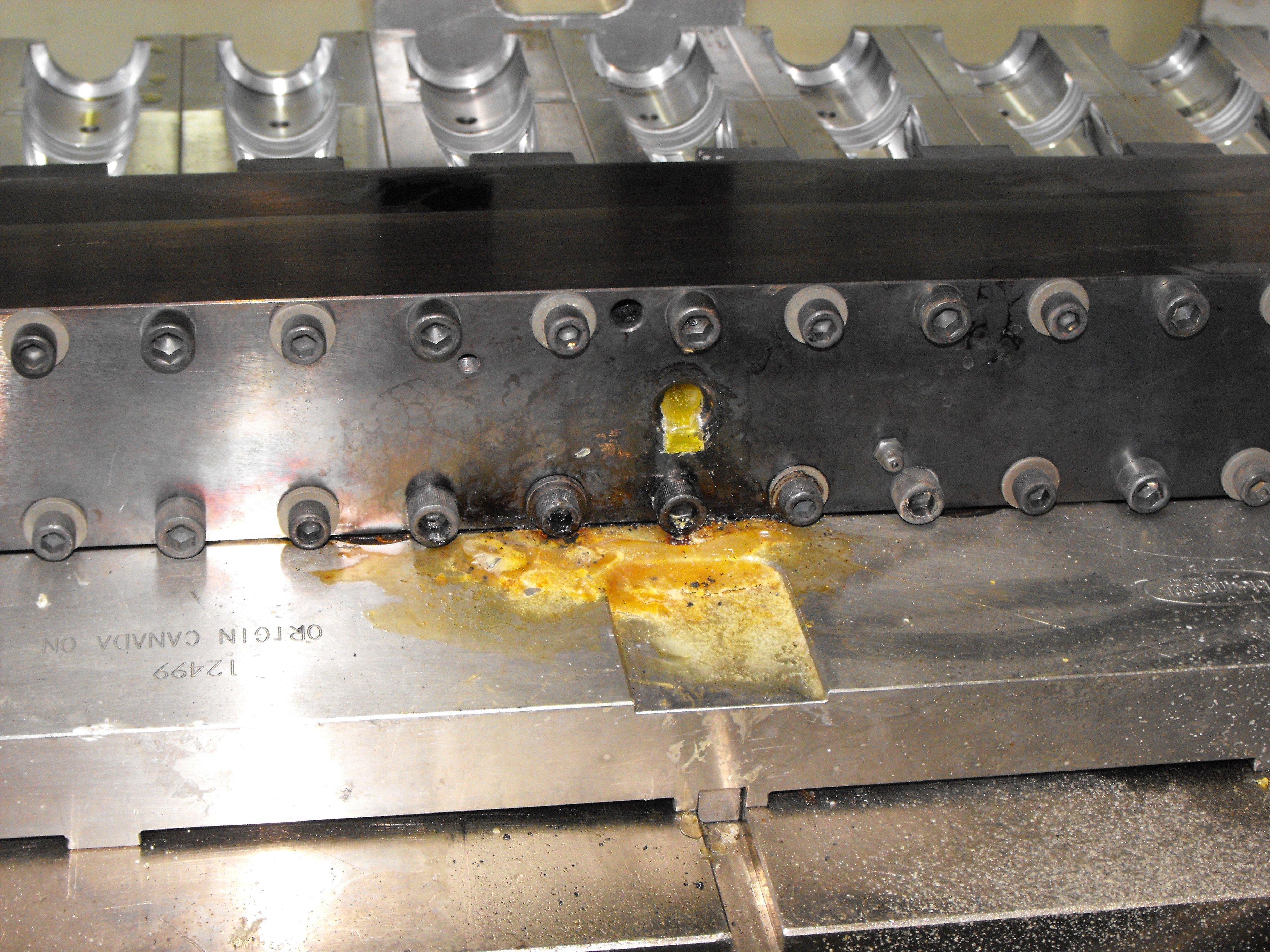
After
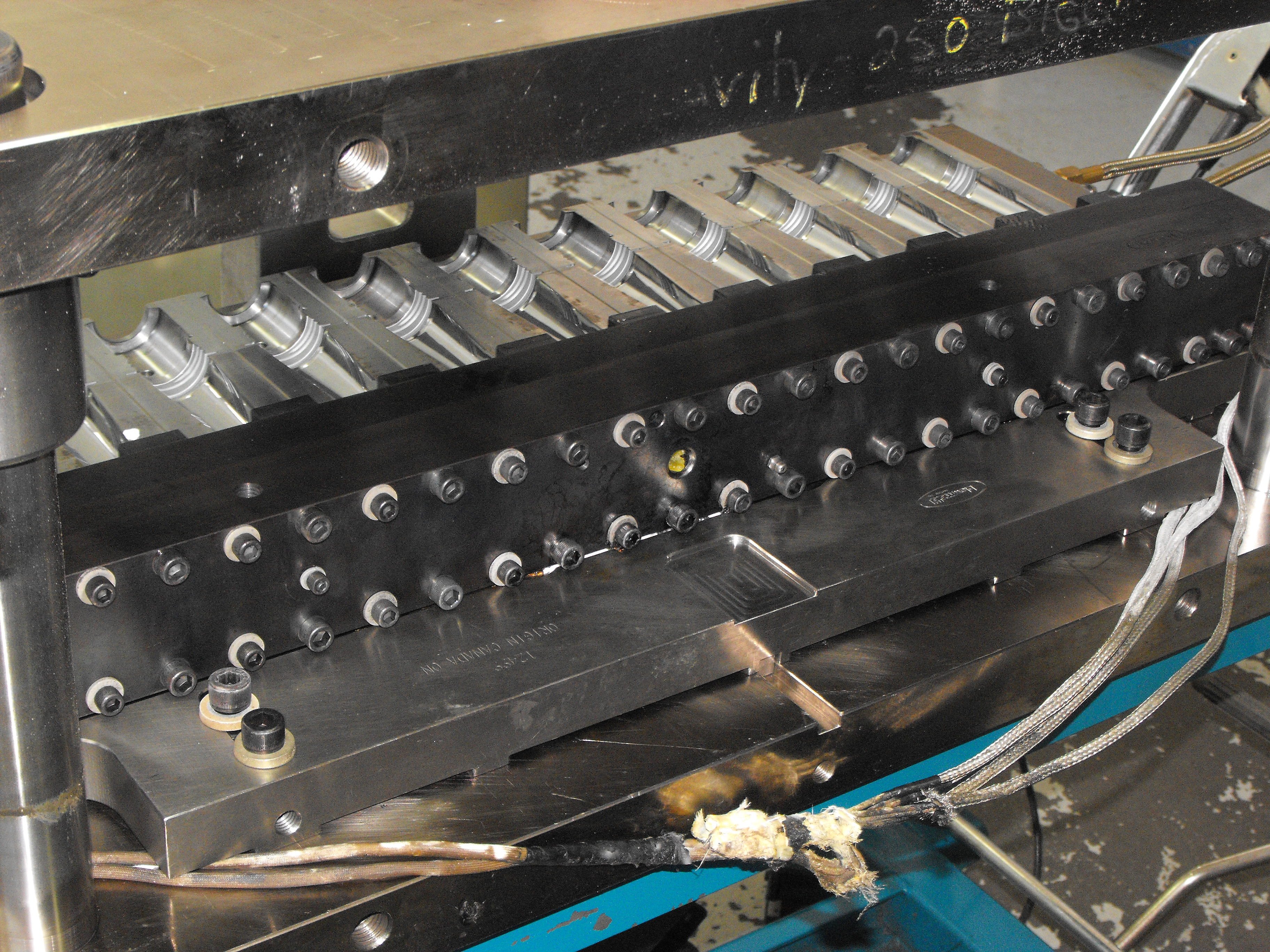
.png) English
English